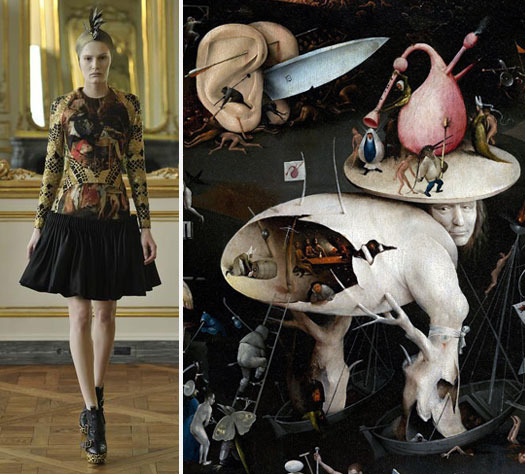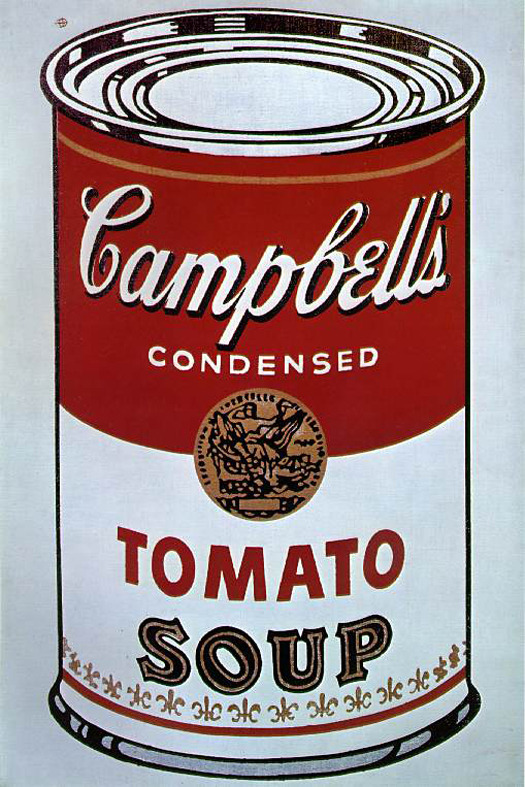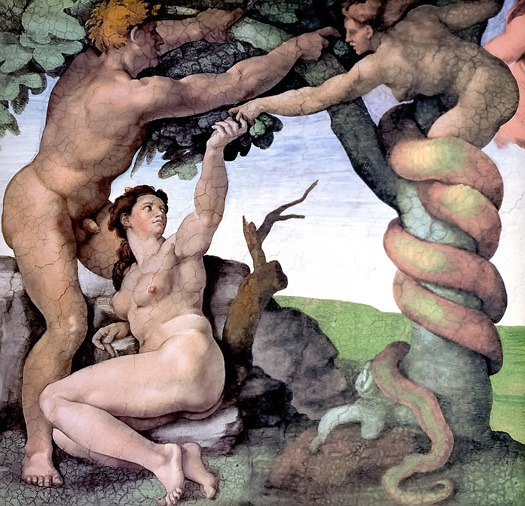
Chupa Chups logo, designed by Salvador Dali.
Salvador Dali’s most recognized work does not hang in a museum. It is not owned by Charles Saatchi, Frank Cohen or the Mugrabis. Christie’s or Sotheby’s have no interest in selling it.
The work took the Spanish artist just an hour to complete. Enric Bernat, the businessman who commissioned the piece, loved Dali’s end result. It was fresh, bold and bright.
Dali’s logo for the confectionery brand Chupa Chups remains largely unchanged today. The shape of the daisy is as familiar now as it was when the logo was designed in 1969. The sans serif hand-drawn type has been used since the Victorian era. The colors come from the Spanish flag.
Dali did not try to be original with his design, just brilliant. The artist is quoted as having said, “Those who do not want to imitate anything, produce nothing.”
Unfortunately, the pursuit of originality is chronic amongst designers. Having a piece of work described as original has become a sought-after compliment, but such a compliment is specious.
Creating a completely original piece of work is unachievable because design is the process of rearranging existing elements into new configurations. Styles, tropes, inspirations, popular culture, language and symbols are the materials, and it is the measure of a designer’s ability to reposition these in the most successful way for the audience that determines the effectiveness of a piece.



Top: Henry Beck’s 1933 London Underground map. Middle: Massimo Vignelli's 1972 New York Subway map (detail). Bottom: Michael Hertz's 1979 New York Subway map (detail).
One of the reasons Michael Hertz’s 1979 re-redesign of the New York City subway map is so successful is its use of identifiable symbols. A dot for a marked stop. A thin linking line for a connection. 45°or 90° line to show direction. The design was a development of Massimo Vignelli’s beautiful 1972 subway map, which itself was strongly influenced by Harry Beck’s 1933 diagram for the London Underground. Similar symbols are used because they quickly instruct the reader. The information design works, not because it is original, but because its unoriginality means that decoding it is effortless.
Despite this fact, designers can be consumed by the notion of originality.
Albert Einstein may be to blame. The twentieth century rejected the past’s traditional approaches, and instead began to worship original thought, and original thinkers. The new discoveries by geniuses like Einstein were more exciting than the repetitive nature of old conventions upheld by royal and religious leaders. Modern society began to reward unpredictability, rarity, and those who, as Apple’s 1997 campaign said, dared to ‘Think different’.
Perhaps originality is highly prized because an original is considered to be so special. But, an original does not have to be original.

Left: Alexander McQueen’s Bosch Silk-Jacquard Dress. Right: Detail from Hieronymus Bosch’s The Garden of Earthly Delights.
The Bosch Silk-Jacquard Dress, worn in Alexander McQueen’s Autumn/Winter 2010 collection in Paris, is the original. The single dress was started in the London workshop by the designer, and finished by his successor, Sarah Burton. It is the piece on which the ready-to-wear range of the same outfit was based.
But this original McQueen garment is not original. It has an embellished pleated skirt and a firm, long-sleeved top, which is not a novel combination. The print was appropriated from the right-hand panel of Hieronymus Bosch’s The Garden of Earthly Delights. This spectacular original is full of unoriginality.
The preoccupation with being original can make designers disingenuous. Revealing sources or acknowledging an antecedent contradicts originality, and therefore designers are left with two options: give praise where it is due and give up the notion of originality, or claim sole authorship and hope never to be caught.
Originality can be seen as the antonym of plagiarism. If there is a fear of being branded a plagiarist, rejecting references might be seen as a safe precaution. But abstaining from using sources of inspiration can be detrimental to design. Cultural and social allusions provide a rich source for creatives to explore. If designers isolate themselves in the hope of producing work that is unlike anything else, they are likely to produce only what they have already done, or nothing at all. Designing with just a blank piece of paper is very quiet.
This need not be a disappointing revelation. A design can still be successful, even if it is unoriginal. The work of Andy Warhol is solid proof.

Campbell's Soup Can (Tomato), Andy Warhol.
The American Pop artist’s Campbell’s Soup Can series from 1962 is nothing but a copy of the soup company’s labels and tins, yet the works remain hugely desirable. In 2007, Christie’s sold Campbell’s Soup Can (Tomato) for nine million dollars.
It is a very unoriginal piece of art, yet this is one of its charming qualities. The label is of no special importance or significance. Warhol has not altered any details on the reproduction. But the artist was able to make something new out of something old.
And that is what all designers should be trying to do. Building upon what already exists is more productive than starting from scratch. A scientist does not repeat an experiment that already has a proven outcome, but instead uses trusted conclusions to aid a new experiment. Designers should follow this lead.
Ever since an apple fell on Sir Isaac Newton’s head, creatives have believed that an original idea can suddenly appear in the mind of a true genius. But, in reality, the most brilliant creations are the result of a lineage of references, repetitions and well-established representations. It was Newton himself who said, “If I have seen further, it is by standing on the shoulders of giants.”
Author of the Twilight saga, Stephanie Meyer, claims the story in her books came to her in a dream. Although many wish it had stayed there, the success of the books is difficult to deny. But there is nothing original about the tale of a human female falling for an inhuman male. It is simply a recast of an old story. A similar narrative can be found in Beauty and the Beast, The Hunchback of Notre Dame, Phantom of the Opera, King Kong, Spiderman and Shrek. The familiar always persists.
For this very reason, it is impossible to be original. Everything has a traceable past. Even Adam and Eve in Michelangelo’s Sistine Chapel, who were directly copied from the panels in the Basilica of San Petronio, have belly buttons.

Deatil from Michaelanglo's The Downfall of Adam and Eve.
Where this liberal view of originality becomes problematic is in to the area of intellectual property law. Before a plaintiff can have his or her copyright infringement application heard in court, a judge must be satisfied that the work of the plaintiff is original. Proof of a substantial amount of effort, labor and time is satisfactory for some courts, but perhaps these criteria should better be balanced with the natural process of copying in design, and its effect on the idea of originality.
Even though originality is impossible, a new design is very possible to create. A new piece of work suggests that it has been recently produced, but where it originates has no bearing on its quality. Newness is a fact of recent production, but newness doesn’t make it original.


Comments [12]
Love this paragraph:"And that is what all designers should be trying to do. Building upon what already exists is more productive than starting from scratch. A scientist does not repeat an experiment that already has a proven outcome, but instead uses trusted conclusions to aid a new experiment. Designers should follow this lead."
The same words that Paul Rand said:" Don´t try to be original, try to be good". Is just about that.
Designers struggles with originality and tryin to create something from blank, and they die trying it, why? Because they suffer a tremendous pressure and they cant have a good creation process.
So what is needed to be a good creative, for me, enought trust in yourself, but not that much to be an unbearably arrogant.
03.14.13
10:06
Great reading, thank you.
03.15.13
09:11
What is much more interesting than designers brooding over whether or not they can populate the world with more (un)original stuff is the working being done on what designed things design, and how to design things out of existence, e.g. http://designphilosophypolitics.informatics.indiana.edu/?p=115
Being able to see what can be designedly taken out of existence, being able to see what things things themselves produce, and being able to see how things have a life beyond our conception of them (particularly as 'original' or not), seem to me like far more important and futural avenues of research.
03.16.13
02:56
03.16.13
03:23
03.16.13
01:36
Seriously though, I think you're hitting on something by linking the love of novelty with science. In his 1954 book Science and Human Values, J. Bronowski asserts that it's a new value since the renaissance, born of science's prioritization of an individual's perception and thought. In order for the society of scientists to learn, any individual must be able and willing to assert that the group is wrong, and that his or her personal experience is superior to received wisdom.
03.17.13
01:26
03.21.13
08:02
I agree what article says about being good is more important. However, the reality is you are a real person and you have ambitions. The dilemma exists. Now, I think what designers need to struggle most is to push yourself to the best concept. To be original could be a goal and standard that you strive for.
www.provocante.ca
03.21.13
09:41
and are we really willing to submit to the idea that "design is the process of rearranging existing elements into new configurations"? am i confined to operating under a finite set of elements? can new elements ever be achieved?
the piece seems to suggest that the author has little conception as to what originality really means. as per the warhol example, i am much less concerned with the originality of the content, but instead with the originality of the process and product, of which i might say is unequivocal.
03.22.13
12:42
03.28.13
09:13
Realise that the post is generally about communication design/graphic design but within interactive design there is plenty of scope for originality - new tech means new conventions, new ways of interaction. There is a load of interesting (and original!) work going on with new interaction models, touchscreen interaction is a good example.
And calling Warhol's soup can a "very unoriginal piece of art" is missing the point. The soup can is a very original piece of art. It is not 'design' - it is conceptual art, the idea - thats is what is original.
04.04.13
05:12
www.nohandsdesign.com
04.18.13
01:32